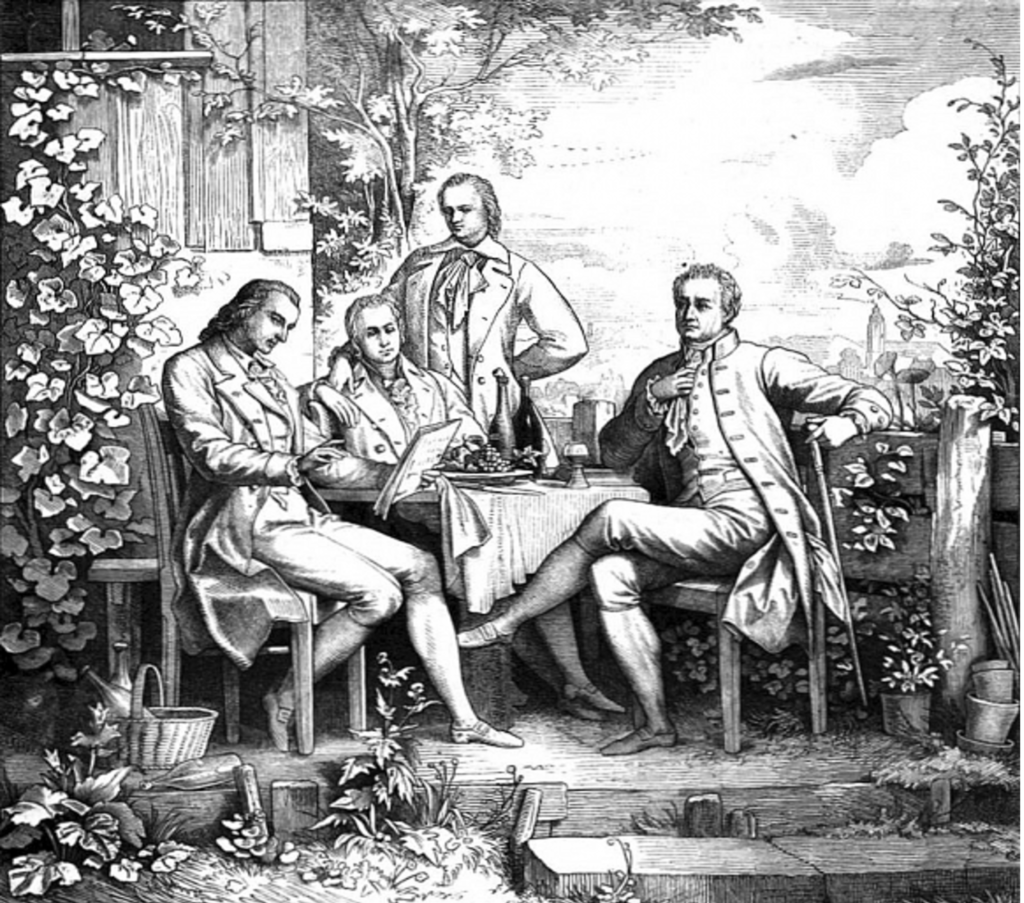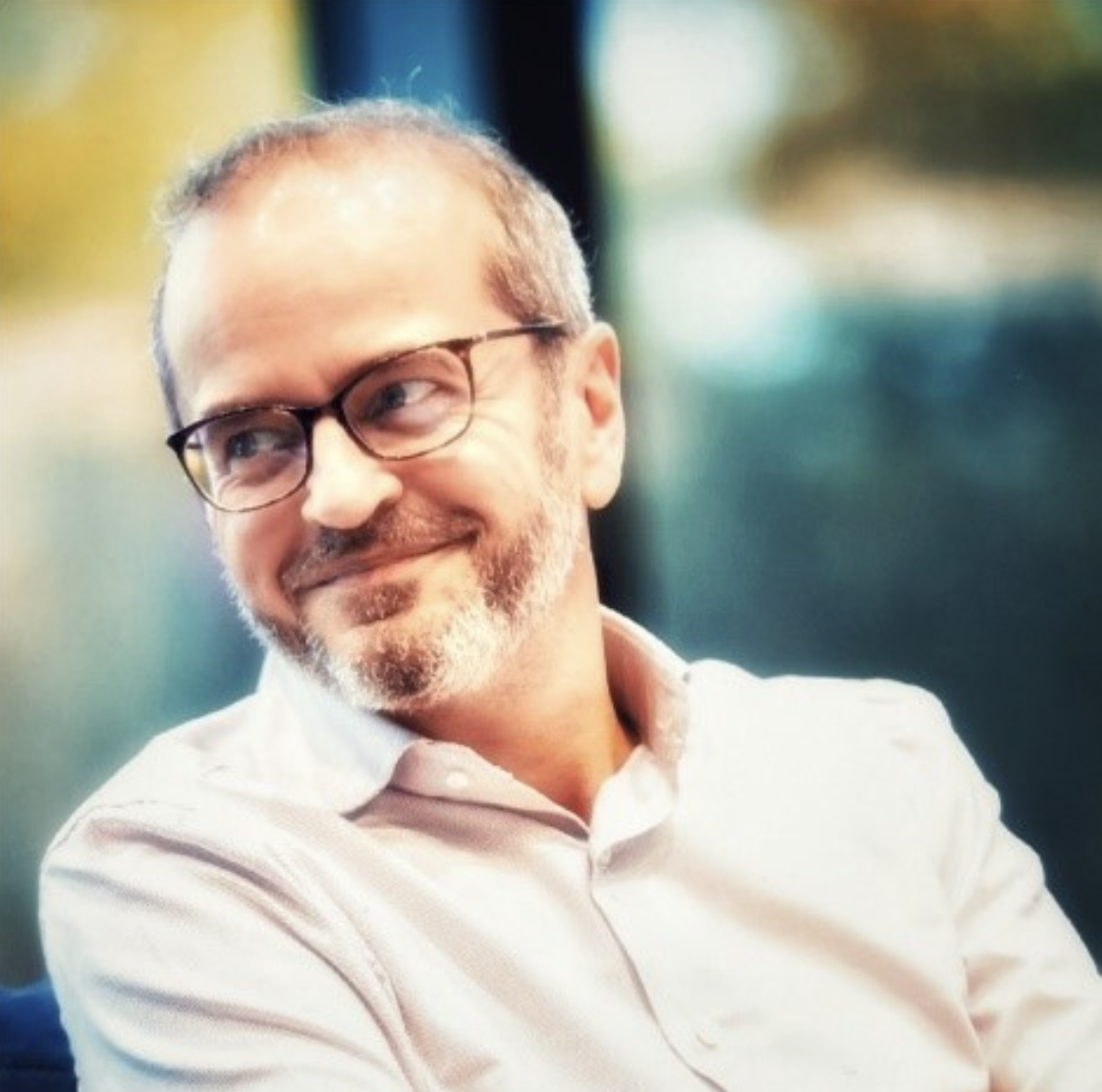Man is not at the center of the universe. In fact, the universe has no center. There are many suns, surrounded by many planets and on some of them there might even be life forms comparable to ours. This is how the philosopher, mathematician and cosmological theorist Giordano Bruno speculated about the Copernican model that was discussed at his time. In February 1600 he was burned on a stake at Campo de’ Fiori in Rome. To silence him, they drove two pins into his mouth. One through his cheek and his tongue and another pin through his lips. The form of a cross.

Bruno was burned by the Church, who feared for the dominance of their narrative. More than 400 years later, in a world dominated by science instead of religion, we still struggle to accept the consequences of this deep insight: We are not at the center, because there is no center. We preferred to follow Leonardo da Vinci. A century before Bruno was burned in Rome, this Renaissance superhero had drawn the so-called Vitruvian man – a naked man in two superimposed positions fitting both into a circle and a square. He stands at the center of Cosmos (the circle) and Polis (the square), the natural and the social world. The universe is organized around him. He is the measure of all things, and it is therefore legitimate to understand nature as something to be “tortured” for revealing its secrets as Francis Bacon wrote or to be “domesticated” as philosopher Jürgen Habermas would argue centuries later.

It was not the only wrong turn we took. During the 18th century, Enlightenment thinkers like David Hume developed the idea of science as a profoundly analytical activity: Scientists gather empirical evidence on the natural and social world by cleaning particular elements and causal connections from their context, thereby reducing the noise of real-world complexity and investigating pure and isolated phenomena. From a positivist perspective, This is understood as the only legitimate approach to science. In 1929, philosopher Otto Neurath, the leader of the Vienna Circle echoing da Vinci famously wrote:“In science there are no ‘depths’; there is surface everywhere: all experience forms a complex network, which cannot always be surveyed and can often be grasped only in parts. Everything is accessible to man; and man is the measure of all things.” The natural scientists look through the microscope, the social scientists do experiments. Both zoom into the details – the “parts” as Neurath wrote. We deconstruct the world and assume that we advance knowledge by accumulating insights on the parts. We deconstruct the forest and analyze each tree separately. The forest is the sum of a compilation of isolated trees. Similarly, we deconstruct society as the sum of separated individual minds.
Today, while acknowledging the achievements of our modern (i.e. Western) world as a result of the scientific journey of the Enlightenment, we increasingly face the collateral damage that came with these two misunderstandings. Cleaning phenomena from the noise of real-world complexity often leads to an oversimplified understanding of the natural and the social world, and a hostile nature that we domesticated has been turned into an overused commodity. We measure human progress by translating exploitation into GDP. Man as the measure of all things has paradoxically even blinded us for the needs of humans themselves and has fueled the grand environmental and social challenges that lead to today’s permacrisis.
It didn’t have to take such a direction. What if we had followed Giordano Bruno and moved man out of the center? If we had chosen a more holistic approach to our scientific understanding of Cosmos and Polis?
Imagine you could travel back in time on a time machine. Where would you go? I would want to sit in a garden in Jena, back in the summer of 1797, listening to the conversation of the four men who are captured in this drawing.

Two of them are well known: Goethe and Schiller – sitting on the left and the right of the table. Fascinating people. However, I would rather be interested in the two at the center of the drawing: Wilhelm and Alexander von Humboldt. Their ideas could have given a totally different direction to the Enlightenment. They were rockstars of their time, but soon forgotten afterwards. Wilhelm, born in 1767 and Alexander, born two years later, were the sons of a Prussian aristocrat. The early death of their much beloved father in 1778 deeply traumatized the young boys. Both developed very different ways of processing their grief. Wilhelm, the older brother turned inward. He escaped into books, reading and translating ancient Greek and Roman authors. Alexander turned outward. He escaped into nature, spending his time in the forest around his home, collecting rocks and insects. In the books and in the forest, the brothers would both discover a secret of the world that was opposed to how Enlightenment scholars approached it: Both realized that we best understand ourselves and the world around us, Polis and Cosmos, by looking at the connections. What Alexander found in nature, Wilhelm found in language. The secret power of in-between-ness. “In considering the study of physical phenomena… we find its noblest and most important result to be a knowledge of the chain of connection, by which all natural forces are linked together, and made mutually dependent upon each other,” Alexander von Humboldt wrote. “In order for a human being to understand only a single word truly… language must be whole and in context. There is nothing individual in language, each of its elements only announces itself as part of a whole,” Wilhelm von Humboldt concurred. Man is not at the center, because there is no center and the best understanding of the world does not result from zooming into details, but from understanding how everything relates. Much later, James Lovelock would give a name to this idea, “Gaia.” Until recently, he was ridiculed and pushed to the margin of the scientific debate.
The Humboldt brothers made the first and important decentering move from an analytical understanding to a holistic and interconnected understanding of Cosmos.[1] If we think the idea of Giordano Bruno through to its logical conclusion, however, we cannot stop at this point. There must be a much more radical decentering with at least two additional moves. First, from a subject-centered to an intersubjective understanding of Polis. Think about how we understand cognition. Since Descartes, we investigate it as a feature of the individual and isolated mind. In their book “The Enigma of Reason”, Hugo Mercier and Dan Sperber demonstrate that it makes much more sense to understand cognition as a social feature that operates across networks of connected individual minds. The isolated self – so well represented in the utility-maximizing homo economicus is just fiction. The same might be true for our biological self. In his recent book “Blueprint”, Nicholas Christakis offers an analysis of how genes do not just change within humans, but across. The self is an intersubjective entity and cannot be understood without this insight. We are just starting to realize what this means for research in psychology, sociology and ethics. Finally, we need to radically rethink our concept of agency. In his book, “Gaia”, Bruno Latour argued that we made a profound mistake when we thought about “nature” as a kind of background for our human theatre plays, populated by soulless animals at our disposition as resources. Instead, Latour argues, the earth is animated by “countless forms of agents” whom we have “rendered mute in order to avoid answering the questions ‘Who or what is speaking? Who or what is acting?’” What if we gave a voice to a dolphin in a stakeholder dialogue? Legal rights to a river or a forest? Agency to non-human nature? As Milton Friedman once famously wrote, “only a crisis – actual or perceived – produces real change. When that crisis occurs, the actions that are taken depend on the ideas that are lying around. That, I believe, is our basic function: to develop alternatives to existing policies, to keep them alive and available until the politically impossible becomes the politically inevitable.” New ideas around those three moves of radically decentering man are now increasingly discussed by numerous natural and social scientists. The ideas are lying around. Our permacrisis with its many grand challenges might be the moment to assemble them and to fulfill Giordano Bruno’s legacy.
[1] Yes, I know that in other cultures and spiritual traditions, this idea is much older, but here I want to trace some paths taken and not taken in the Enlightenment, which shaped modern thinking.
-

Guido Palazzo
Guido Palazzo is a professor of business ethics at the University of Lausanne.
View all posts


2 Responses
Thank you Guido Palazzo for this blogpost, it’s great
Great insightful post, Guido.
As you noticed, the ideas are lying around – they were always there and are surrounding us.
Then it is something else for any brilliant mind to catch some of them and put them together with appopriate wording, before trying to convince the others (ego and jealousy are lying around, too).
I can’t help but think about this tune about Giordano Bruno that I discovered 33 years ago (https://youtu.be/QS8FJK9Zu6A).